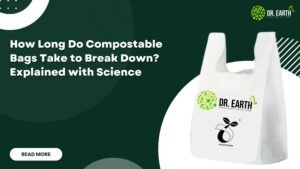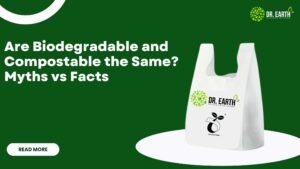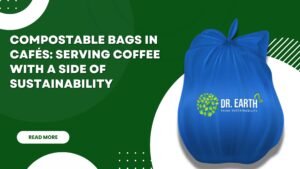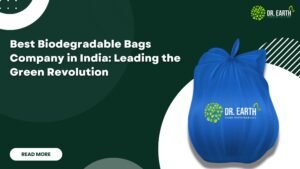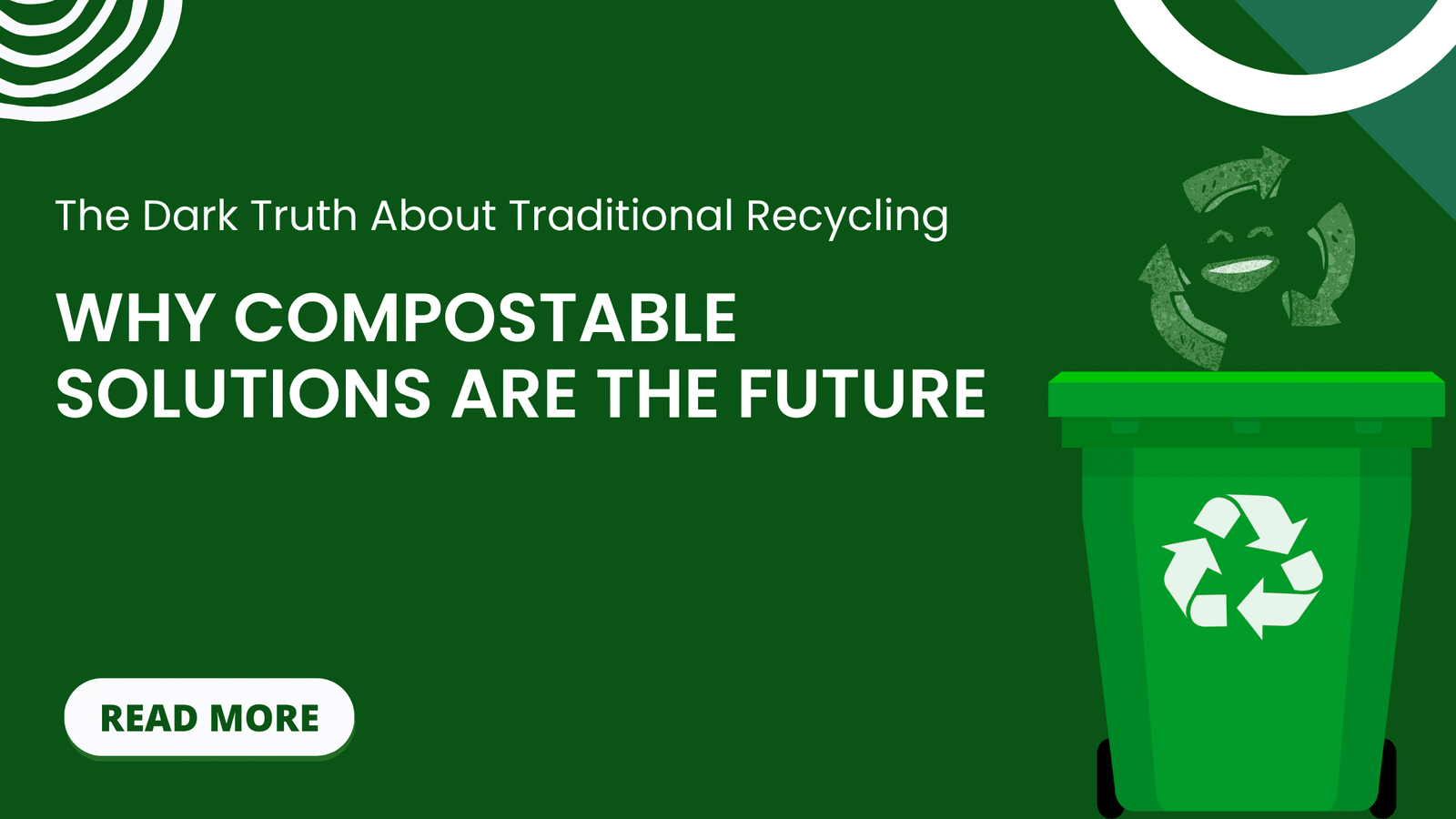
Currently, recycling has been particularly peddled for decades as the be-all and end-all of dealing with plastics. It has been suggested as a way of easing the effects of pollution, conserving resources and coming up with ways of preserving the environment. However, the reality is far darker for traditional recycling as a as we are going to see now. In fact, the idea of recycling plastics only has slight effectiveness and poses a new range of environmental problems on its own. That is why Dr. Earth posits a true transformation from recycling, towards compostable packaging as the new future of packaging solutions.
The Reality of Traditional Recycling
Recycling is often seen as the ideal way to handle plastic waste, but it has several flaws that have been overlooked:
1. Recycling Rates:
Even with popular awareness campaigns and efforts made by governments across the world, only 9% of the world’s plastic waste is actually recycle. Most of the dispose plastics are still found in dumping sites, waste fires or bodies of water affecting the environment and animals.
2. Downcycling, Not Recycling:
Plastics have a myth in society that they can be recycle infinitely but the truth is not like that. Unfortunately, the majority of plastic recycling is done through downcycling, whereby the materials are turn into secondary products that cannot be recycle. For instance, a plastic bottle can be recycle to make another plastic bottle that is of lower grade, then sent to the landfill.
3. High energy consumption:
Recycling is an energy-consuming process, specifically when it comes to the recycling of plastics. The process of collection, transportation, separation and repolishing uses a lot of energy, most of which is sourced from fossil energy. It patronizes this process, which results in the emission of carbon and reduces the environmental gains of recycling.
4. Contamination Issues:
To recycle plastics, the plastics have to be as clean as possible, and this forms the basis of this subtopic. However, poor handling of plastics and combine wastes leads to the production of poor-quality plastics that cannot be recycled. This is because in households one is likely to find food residue, labels, and/or different types of plastics entangled and then thrown as recycled materials, therefore making the process of recycling cumbersome and costly.
5. Limited Market for Recycled Plastics:
The purchase of recycled plastics is not wide and the markets for the same fluctuate. There is reluctance to use recycle plastics, mainly because they are usually more costly than virgin materials, which are use in making new plastics. This economic challenge raises the bar to great heights where recycling programs are hard to sustain and make good financial returns to the business.
The Hidden Environmental Costs of Recycling
While recycling aims to reduce waste and environmental impact, the process itself has several hidden costs:
- Greenhouse Gas Emissions: The process of recycling, particularly that of plastic materials, requires high temperatures and sophisticated tools that in themselves comprehend large energy usage. This, as a result, leads to the emission of greenhouse gases like CO2 and methane, hence enhancing the problem of climate change.
- Chemical Use: Plastic recycling centers employ the use of chemicals to wash and prepare plastics for recycling. They include substances that may be dangerous to the health of individuals and to the environment as well. However, there are plastic recycling products that contain toxic additives that can be release into the environment even further.
- Waste Residue: Some conclusions made from the facts are: not all plastics that go to the recycling center are recycle. A big part of it becomes waste residue, which needs to be dump, and this is normally done in landfills and even through incineration, which is equally destructive to the environment.
- Transportation Emissions: You need to use fuel to transport the recyclables and this makes the recycling process environmentally unfriendly. This is especially a concern because the effort and energy require to transport the plastic waste to recycling plants or other facilities in Europe, for instance, are not factors while determining the extent of environmental gains in recycling.
Why Compostable Solutions Are the Future
Considering the inefficiency and high true costs of traditional recycling, it’s high time to switch to compostable products. Here’s why compostable products, like those offered by Dr. Earth, are a more sustainable alternative:
- Naturally Biodegradable: Some products labeled as compostable include Dr. Earth’s biodegradable, environmentally friendly bags, which are made from natural resources like cornstarch and potato starch.. These materials biodegrade in composting conditions and transform into compost that is nutrient-rich soil without any residual toxins.
- Reduced Carbon Footprint: Manufacturers use less energy to produce compostable products compared to regular plastics because they design these products to decompose easily.
- No Harmful Chemicals: Composting, compared to recycling conventional plastics or decomposing plastics in landfills, is way more effective in terms of generating greenhouse gas emissions.
- No Harmful Chemicals: Unlike other recycled products, Dr. Earth‘s items are biodegradable and made from natural raw materials that do not release toxic chemicals into the environment.This makes them safer for people and animals as well as other wildlife in their natural ecological systems.
- Supports a Circular Economy: Compostable products contribute to developing a circular economy because these commodities add valuable nutrients back to the ground. Compostable products do not create waste that lingers for a long time. Instead, they regenerate the soil and help eradicate environmental pollution.
- Less Dependency on Fossil Fuels: Conventional plastics are sourced from petroleum products, while compostable products are sourced from annually renewable sources. This shift relieves pressure on nonrenewable sources of energy, thereby encouraging a sustainable farming system.
Challenges of Compostable Solutions and How to Overcome Them
While compostable products offer significant environmental benefits, there are challenges to their widespread adoption:
- Composting Infrastructure: In order to realize the full benefits of compostable products, we also require a highly effective composting system. This includes additional ICI composting facilities for the processing of many types of compostable materials.
- Consumer Education: The fact is that a significant percentage of consumers remain uninformed on compostable products and the ways to deal with them.Educating the public and labeling these products properly will help ensure that people place them in the right bin and that they reach the composting facility.
- Regulatory Support: The governments therefore have a great role to play in intervening by providing policies that will encourage the use of compostable products. This may comprise such measures as subsidies for the use of compostable packaging, restrictions to the use of plastics, and funding. of composting facilities.
- Cost competitiveness: That is why today, compostable products may be even more costly to make than regular plastic materials. However, with the increased demand and improved production, the price of the compostable products is likely to drop. The consumers and businesses can also play their role by choosing sustainability over price.
Dr. Earth’s Commitment to Compostable Solutions
We at Dr. Earth understand and embrace the change to compostable products. We are working to bring the following compostable garbage bags to our customers and all our products, like biodegradable polymers, can only be eco-friendly. Spartan’s way to guarantee that our products are free from plastics, is to use plant-based materials that biodegrade and provide nutrients to the soil. Our products are CPCB, CIPET, and CTO approved, which means they are safe for use in the environment while also being efficient and functional for daily use.
Eco-friendly—this is what you get when you decide to go for the Dr. Earth company, as they practice reduction of plastic usage. Our purpose is to offer functional, sustainable solutions, helping people and the planet to become a better place for generations to come.
How You Can Make a Difference
Changing toward compostable everyday items is one of the most effective ways to make a small but significant step. Here are some ways you can contribute to a more sustainable future:
- Choose compostable products: Use compostable bags and cutlery and packaging materials whenever you can make the purchase. Promote the various organizations around the world and nurture organizations that consider the environment in the production of their products.
- Educate yourself and others: Generally, educate other people on the importance of buying compostable products and the advantages of using them. Knowledge empowers people to fully embrace change when they understand the required changes
- Proper Disposal: Make sure that those products are dispose of in the right place, within composting facilities. Explain to your local community, heads of families and government officials the need to invest in the composting infrastructure.
- Advocate for Change: Back legislation that encourages the utilization of compostable products instead of regular plastics or other similar products.
- Support Companies Like Dr. Earth: For example, by using products from companies who’ve adopted sustainability policies such as Dr. Earth, we are promoting the use of compostable solutions towards a more sustainable future.
Conclusion
Conventionally recycling similarly in a bid to reverse the trend in the use of plastic products may not be the best solution towards exterminating the vice. It therefore has a number of minor drawbacks, including low recycling rates, high energy intake, emissions of greenhouse gases and toxic chemicals. From the sustainably friendly perspective, there are compostable options available in the market, for example, Grange, Dr. Earth. As the identification and utilization of compostable products are on the rise, fossil oil use will decrease, meaning reduced greenhouse gas emissions.We should switch to compostable products right now and become part of the change.
FAQs
1. What makes compostable products different from traditional plastics?
Ans- Biodegradable products come from raw organic materials like cornstarch and potato starch, which easily disintegrate during the composting process. In contrast, manufacturers produce regular plastics from petroleum-based chemicals, which can take hundreds of years to degrade.
2. Are compostable products safe for the environment?
Ans Yes, compostable products are intend to disintegrate and release no toxic elements into the environment while improving the soil quality and promoting the circular economy. They contain no toxins or microplastics.
3. Why is traditional recycling not enough?
Ans- Conventional material recycling lacks efficiency, consumes a lot of energy, and frequently downcycles materials instead of fully recycling them It also has high environmental costs in terms of greenhouse gases and chemicals while also impacting people’s health.
4. How can I dispose of compostable products properly?
Ans- Dispose of single-use packaging and other compostable items in compostable waste bins, composting facilities, or a home compost bin for decomposition.
5. How can I support the transition to compostable solutions?
Ans- To support compostable solutions, you could buy compostable products and demand better composting facilities and also patronize companies like Dr. Earth.
Share:
Related Posts
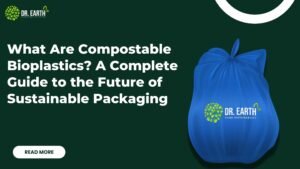
What Are Compostable Bioplastics? A Complete Guide to the Future of Sustainable Packaging
Read More »Send Us A Message
Related Posts




